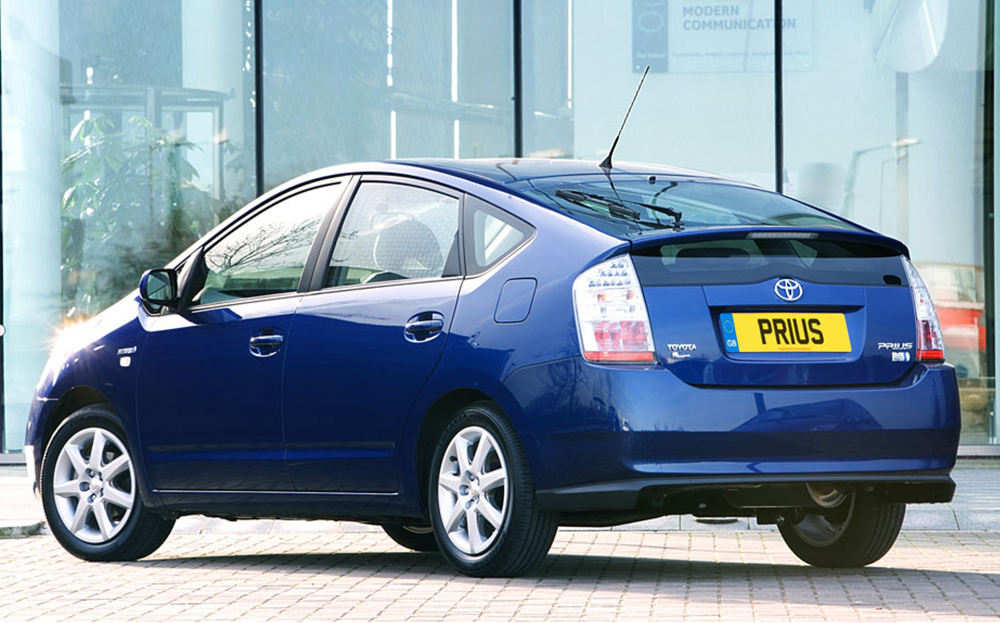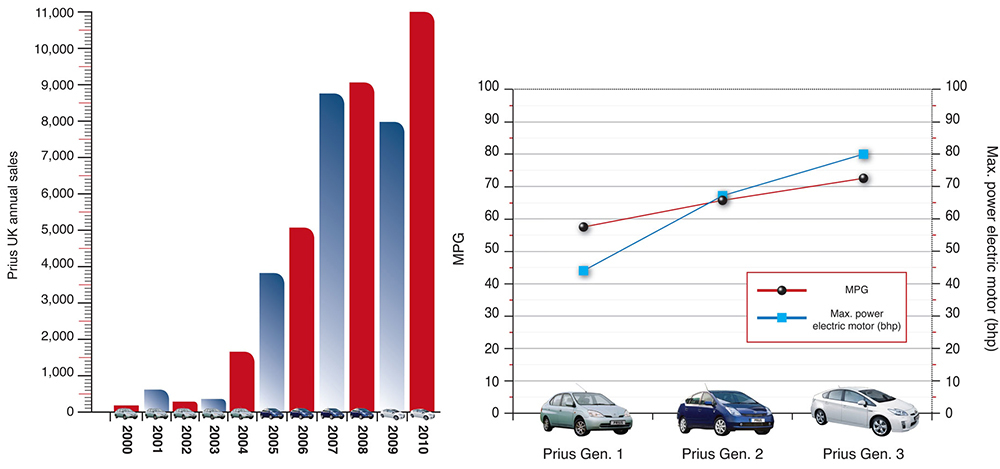Toyota Prius (2000 to present)
Prices, issues, recalls, warranty info and more

SO, YOU’RE thinking about buying a Toyota Prius. Join the club. Last month, the Prius was the fastest-selling used car in Britain. It may have been designed for eco-driving, but the hybrid-powered family car accelerated off used car forecourts like Lewis Hamilton roaring away from an F1 pit stop.
Search for and buy a Toyota Prius on driving.co.uk
On average, a used Prius was snapped up by a new owner after just 25 days on sale. To put that into context, even desirable cars that are in short supply, such as the Range Rover Evoque, took 32 days to sell. The data is provided by Glass’s, a used vehicle valuation company that’s been monitoring the car market for 80 years.
What’s the attraction? Well, the Prius is a relatively family-friendly car that promises the fuel-efficiency of a diesel – as much as 72.4mpg from the latest model – with the cleaner emissions of a petrol car.
It does this by combining a four-cylinder petrol engine with an electric motor. The two work together or independently of one another – what’s known as a “full hybrid”. So in low-speed driving environments, such as a city centre, the Prius can be driven on electric power alone.
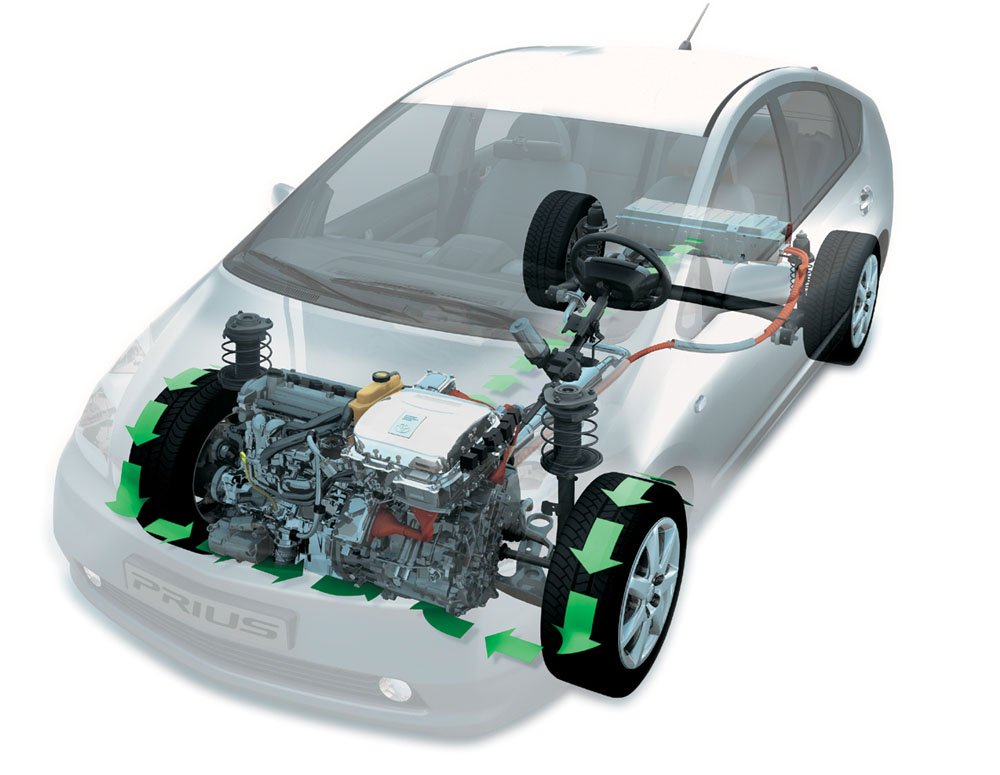
Another attraction of the Prius is that it is exempt from road tax and attracts low benefit in kind tax for company car drivers. And up until last June, when the CO2 threshold was lowered to 75g/km, the standard Prius was exempt from London’s Congestion Charge. Little wonder it’s the world’s best selling hybrid car – by a country mile.
Don’t know your BHPs from your MPVs? Click to take a look at our car jargon buster
But used car buyers will want to know a little about the history of the Prius (it has been in the UK for 14 years and three generations, would you believe); whether it is as fuel efficient as its maker claims; whether this technically advanced family car is a ticking time bomb waiting to self-destruct; and whether it really is as family friendly as their Prius-driving neighbour says it is.
Let’s find out.
Sections
Mk 1 | Mk 2 | Mk 3 | Sales/performance | Warranty | Recalls
Toyota Prius Mk 1 (2000 – 2003)
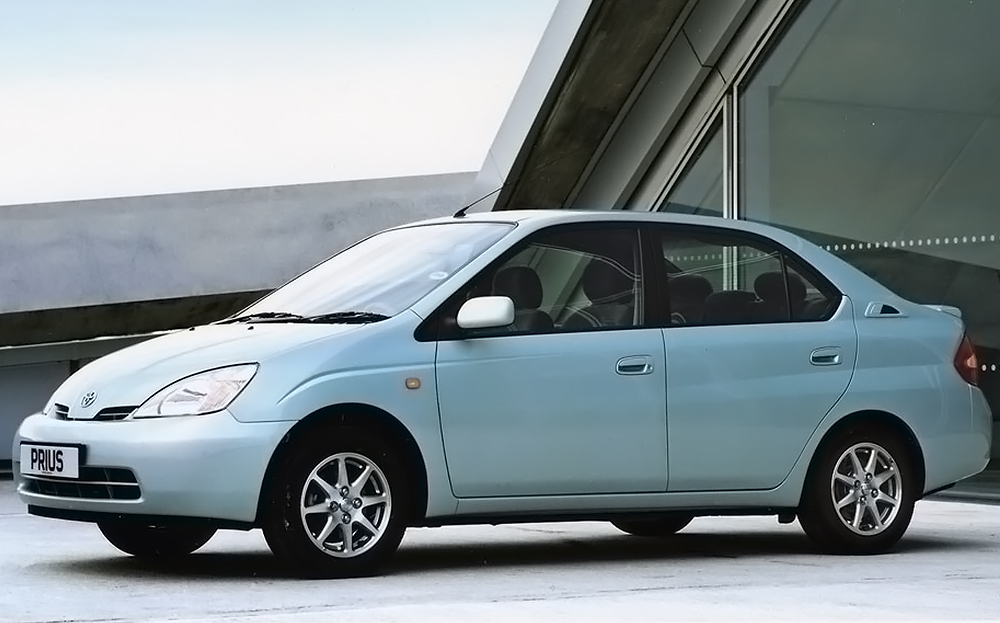
- Price range today: £1,500 to £3,000
- Fuel economy: 55.4mpg
- CO2 emissions: 120g/km
- Road tax band/cost: C / £30
It took three years from the launch of the Prius in Japan for Toyota to start selling the model to British drivers in October 2000.
Its saloon body won few beauty contests, but it was the hybrid system hidden beneath that caught the attention of drivers. It fused a 1.5-litre petrol engine with an electrically powered motor and a continuously variable automatic transmission (CVT), and delivered a total of 100bhp.
A neat trick was its regenerative braking system. This enabled it to capture the energy that is typically wasted when braking in normal cars, to recharge the battery. The same principle applied even when coasting, as the electric motors could be reversed to charge the battery.
The fuel economy was claimed to be 55.4mpg and the CO2 emissions, 120g/km. By comparison, a Ford Focus 1.8-litre diesel saloon of the same era returned 52.3mpg and emitted 142g/km.
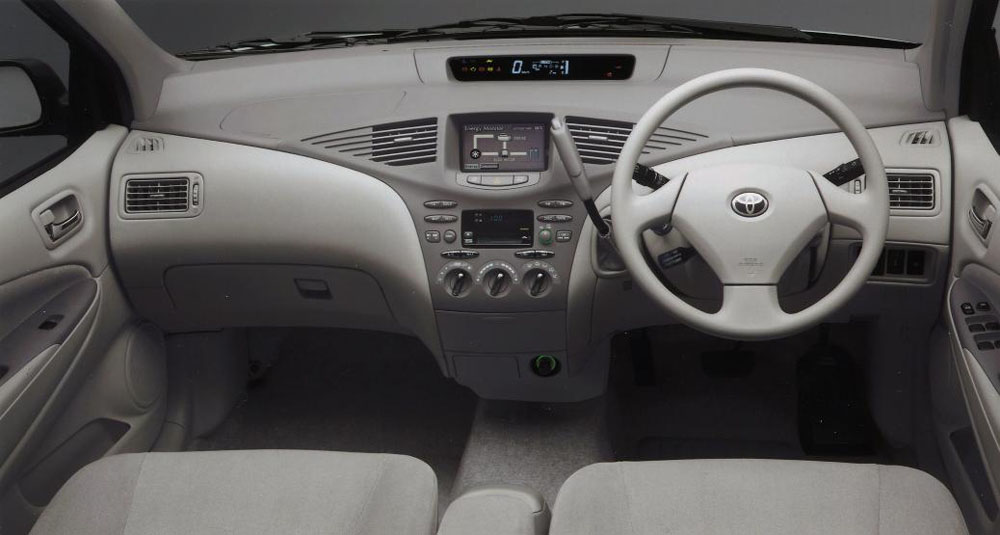
Novel features included an LED screen that displayed how the power was flowing around the hybrid system, using arrows and pictures of the petrol engine, wheels, battery and electric motor. Drivers could also check out their eco-credentials, via a bar graph displaying the car’s recent fuel economy.
It’s just about spacious enough for five people, but a common grumble among owners and reviewers was that the boot was small. This was down to the location of the battery pack, beneath the boot floor.
The driving experience is nothing special and the hybrid system is not as smooth and seamless at switching between power sources as it is on the second and third-generation Prius.
The top speed was just 99mph and the car accelerated from 0-60mph in 13 seconds. More significantly, achieving the claimed fuel economy of just over 55mpg called for saintly driving skills. Admittedly, this is an annoyance common to the majority of cars, but those aren’t sold on their eco-credentials alone.
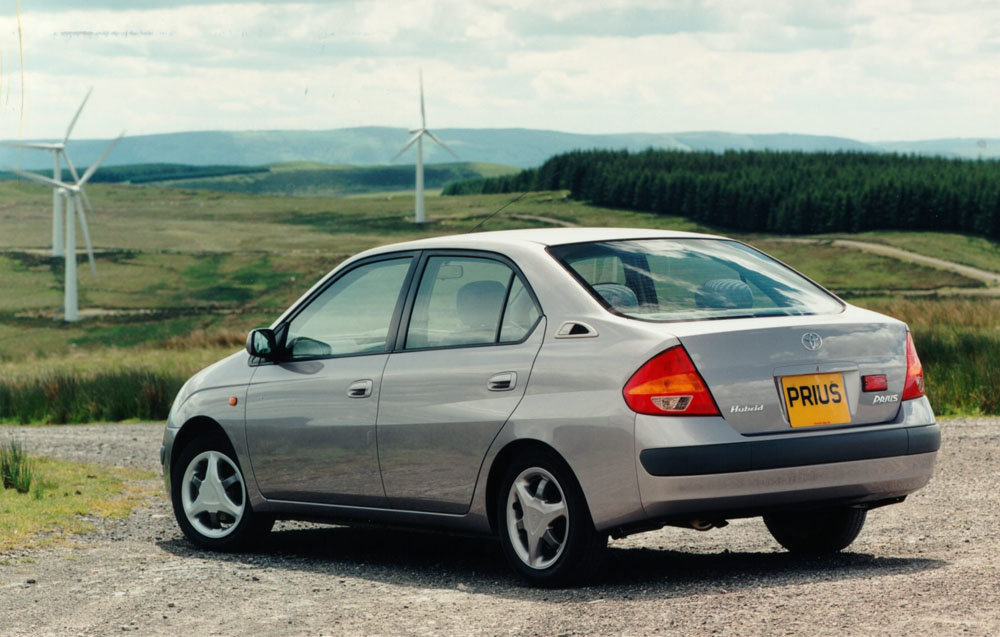
You’ll find that the first-generation Prius is not widely available. Less than 1,500 were sold here, so as reliable as it is (and it is; over 1,100 of those are still registered for use) only a handful will be for sale at any one time.
Prices today range from £1,500 for a tatty model to £3,000 for a good example. The earliest Prius cost Toyota dearly at the time. It was sold for half its true cost and subsidised, ironically, by profits from the super-size SUVs Toyota sold in the US. Katsuaki Watanabe, president of Toyota, admitted as much at the 1998 Paris motor show.
However, there was a logic to Toyota’s madness. It was taking a long-term view that it’s better to build hybrid cars that would gradually attract more and more buyers who wanted to do their bit and lower CO2 emissions, than develop and sell pure electric cars that would be both flawed (limited range) and hugely expensive.
What to look out for when buying a used Toyota Prius Mk I
Any first-generation Prius is now an old car. The battery life expectancy was approximately 10 years or 100,000 miles, roughly the same as the lifespan of the average car. So if you buy one of these it’s now pot luck as to whether the battery will remain operational. Even if it does, there’s the question of how much of its original operating range it retains.
They’re reliable on the whole. Sam Waran, owner of SAI MOT Centre in London, which specializes in servicing the Toyota Prius, says that like all Prius models, the first car is hard-wearing: “Even the suspension bushes don’t wear out. It was fairly light and well made, so seems to last well.” See our recall guide below.
Toyota Prius Mk 2 (2004 – 2009)
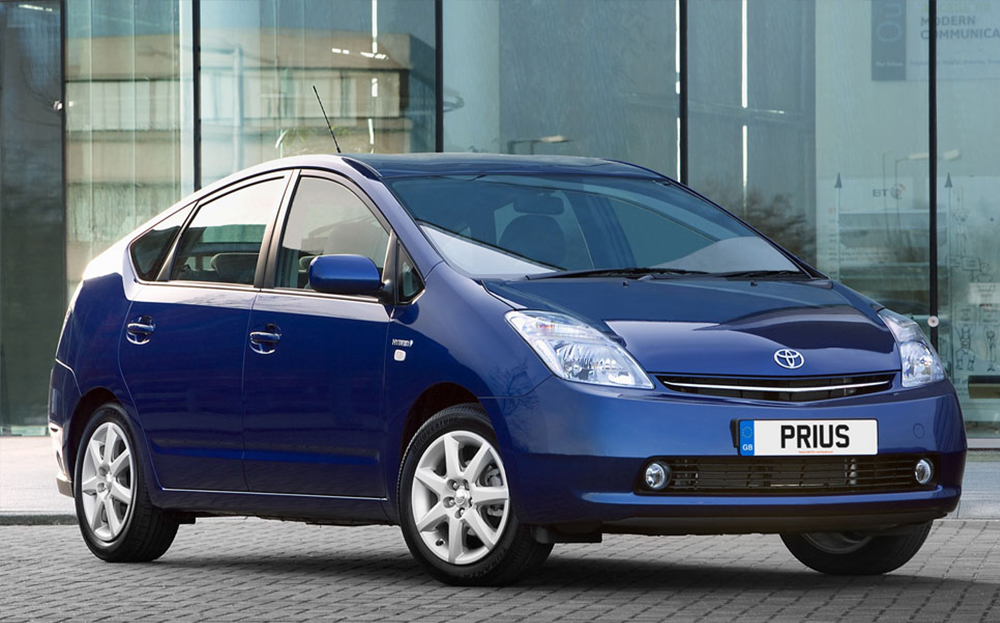
- Price range today: £3,000 to £10,000
- Fuel economy: 65.7mpg
- CO2 emissions: 104g/km
- Road tax band/cost: B / £20
The Prius and its hybrid technology came of age with the second-generation model.
For starters, the change to a hatchback body style was good news for the target audience of caring, sharing families and older, empty-nesters. There was more cabin space, the dashboard took on a more modern design, which felt suitably futuristic, and the boot grew to accommodate 408 litres worth of luggage.
The cabin is significantly more spacious and practical than a Golf or Astra hatchback’s. With the gear lever sprouting from the dashboard, and a large touchscreen information display, there’s a feeling that you’re driving something quite different from the norm.
The Prius range grew to feature three trim levels: T3, T4 and T Spirit. The latter makes a sought-after buy on today’s used market. It comes with cruise control, an uprated sound system, sat nav and Bluetooth connectivity; luxuries in 2004, essentials today.
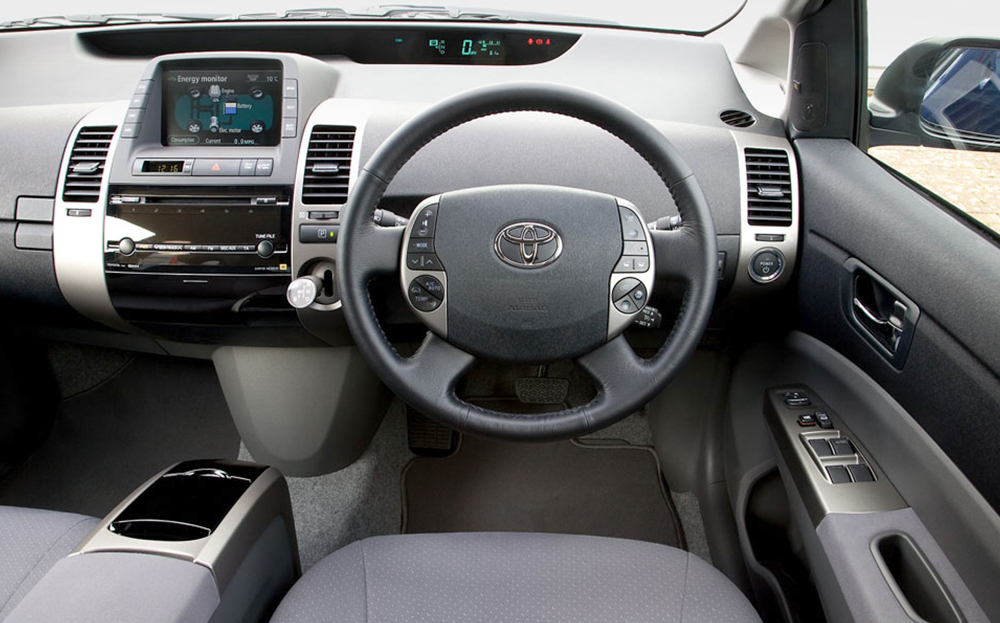
Then there was its second-generation hybrid system. The 1.5-litre engine was significantly modified and the combined power output of the system grew to 112bhp. Yet fuel economy also improved, to a claimed 65.7mpg, while exhaust emissions fell to 104g/km.
In electric-drive mode, the Prius could now travel 2km (1.2 miles) at low speeds before the petrol engine would kick-in and help power the car, as well as charge the battery. That’s the clever thing about its full hybrid system: it can work independently or in tandem, and is seriously good at multitasking.
Performance improved markedly. Where the first-generation car always felt as though you’d left on the handbrake, this one served up a sufficiently brisk turn of speed that meant it was now as happy on the motorway as it was in town. The top speed was 106mph and 0-62mph took 10.9 seconds.
What about the all-important issue of fuel economy? Well, it’s realistic to expect to achieve an average of over 50mpg in day-to-day driving conditions – not the 65mpg that’s claimed. That’s still as good as any comparably sized diesel, though.
This generation of Prius was much more popular than the first. Over 36,000 drivers bought them, so there’s a huge amount of choice on the used car market. Prices for the oldest, highest mileage examples start at £3,000, while the best cost £10,000 from an approved Toyota dealer.
What to look out for when buying a used Toyota Prius Mk 2
Find a car with a full service history and which has also had an annual battery health check. For every annual health check that a Prius undergoes, Toyota will extend the battery warranty for a further year, up to a maximum of 11 years of age. See our table below for a guide to Toyota’s warranties for each generation of Prius.
The Prius performs well in independent customer-satisfaction surveys. Hamish Phillips, of Green Tomato Cars, isn’t surprised to hear that. The private car hire company runs 500 Toyota Prii (the officially sanctioned plural of Prius) on its fleet and has completed over 25 million miles to date in Mk 2 and Mk 3 Prius models. The most common fault is blown headlamp bulbs. Its records show the average fuel economy is 55mpg.
Sam Waran estimates annual servicing costs are £300 and adds, “If you drive efficiently, you can achieve the claimed mpg”.
Toyota Prius Mk 3 (2009 – onwards)
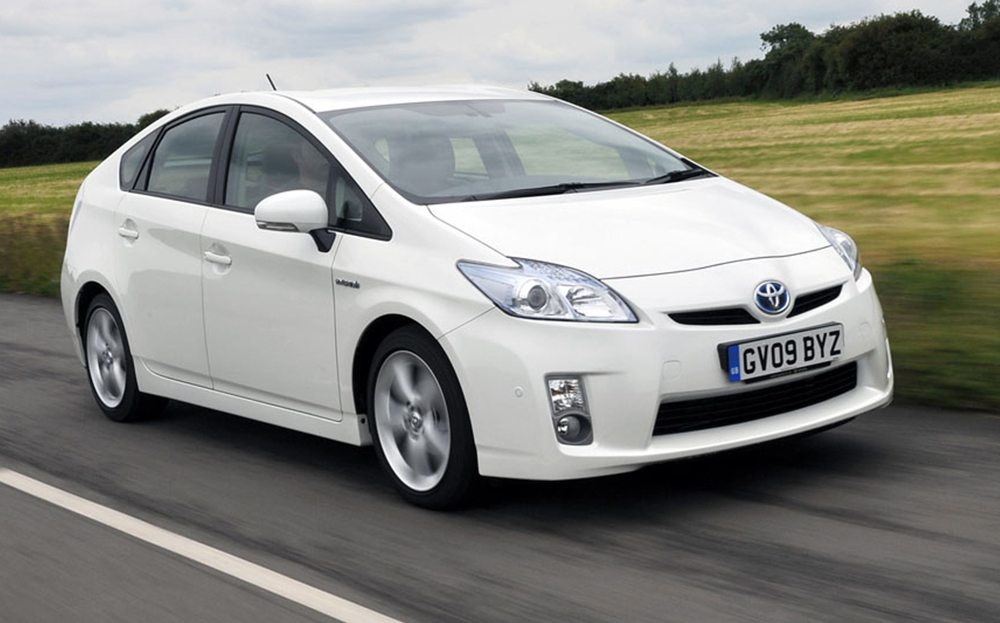
- Price range today: £8,000 to £25,000
- Fuel economy: 72.4mpg
- CO2 emissions: 89g/km
- Road tax band/cost: B / £20
The design changes and engineering updates to the third-generation Prius were reflective of the confidence at Toyota. The car was selling like hot cakes, had been adopted by Hollywood glitterati and there was still precious little competition in rivals’ showrooms.
It looks the most streamlined of the lot and the interior took a step further towards mimicking the bridge of the Starship Enterprise. The size and practicality didn’t alter a great deal, but the performance did.
Read Driving.co.uk’s review of the Toyota Prius Mk 3
The most efficient model in the range was claimed to achieve over 72mpg and had emissions of just 89g/km. This was great news for company car drivers, as it attracted just 11% in benefit in kind. It also meant that the Prius was exempt from road tax (still the case) and London’s Congestion Charge (not since June 2013).
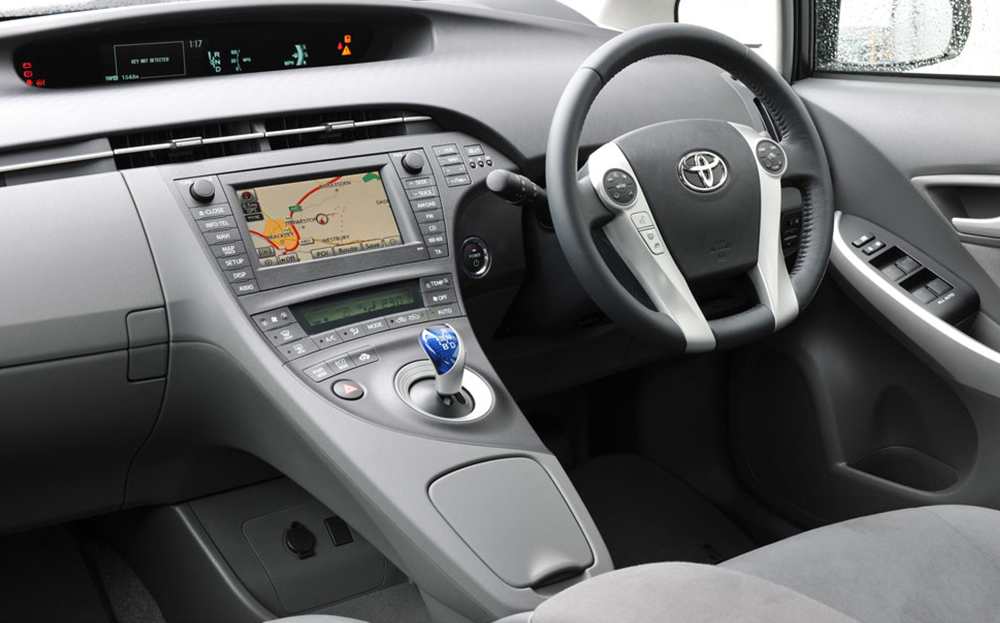
The petrol engine grew to 1.8 litres, which Toyota estimated would improve fuel economy on main road runs by about 10% since the engine wouldn’t have to work so hard, or rev so high, to maintain cruising speed. Once again, it could be driven around town for up to 1.2 miles at speeds of up to 31mph, using electric drive only.
However, the big change came in 2012, when a Prius Plug-in was added to the range. With a larger capacity lithium-ion battery that could be charged from the mains, as well as by the hybrid system, it offered an electric-only driving range of up to 15 miles, and a maximum speed of 51mph. The mains charging time was said to be one and a half hours.
What to look out for when buying a used Toyota Prius Mk 3
If you’re buying a third-generation Prius, then a word of warning: cars sold from the start of 2009 to the end of May 2010 lack the superior warranty cover of later models. This is important, because those post-2010 models got a five-year vehicle warranty (up to 100,000 miles) and eight-year battery warranty as standard. See our comparison table below.
And even though the majority of these models will still be covered by the original manufacturer warranty, it is also worth checking the recalls that have affected this generation of Prius, below.
Sales and performance figures
Click image for full size version
Toyota Prius warranty
This is where things get confusing. When the Prius was sold as a new car, Toyota provided different three different warranties: one for the vehicle, one for the hybrid system and another for the battery pack.
There is also the option to have the battery pack’s warranty extended from five years to a maximum of 11 years, a feature provided by Toyota when the car is serviced according to the manufacturer’s schedule, and given what Toyota calls a free Hybrid Health Check.
Although it could be viewed as a way of keeping owners within the Toyota dealer network, the free health check means that owners who take advantage of it can rest easy knowing the battery is under warranty until it is 11 years old.
It’s worth noting that Toyota offers the battery health check for £39 to any drivers who choose to have their Prius serviced at an independent garage.
Here’s how the warranties compare for the three generations of Prius models:
| Vehicle age | Vehicle warranty | Hybrid components warranty | Hybrid battery warranty | Extended hybrid battery warranty |
| 2003 – 2008 | 3 years / 60,000 miles | 8 years / 100,000 miles | 8 years / 100,000 miles | Up to 11 years / unlimited mileage |
| 2009 – 31 May 2010 | 3 years / 60,000 miles | 5 years / 60,000 miles | 5 years / 60,000 miles | Up to 11 years / unlimited mileage |
| 01 June – 31 March 2014 | 5 years / 100,000 miles | 5 years / 100,000 miles | 8 years / 100,000 miles | Up to 11 years / unlimited mileage |
| April 2014 onwards | 5 years / 100,000 miles | 5 years / 100,000 miles | 5 years / 100,000 miles | Up to 11 years / unlimited mileage |
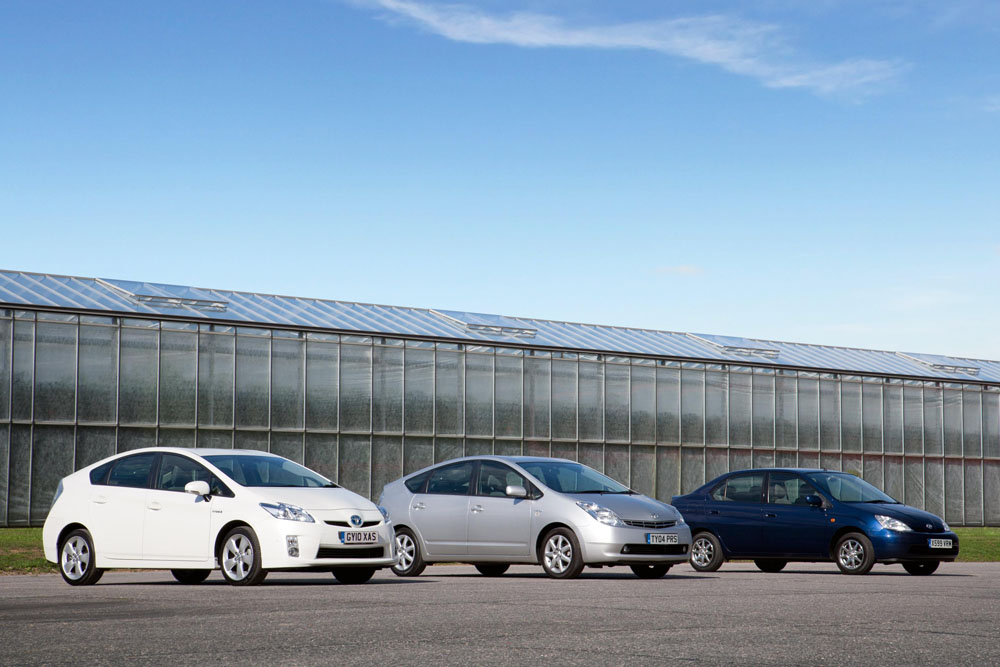
Toyota Prius recalls
There have been a number of recalls ‒ when the manufacturer identifies a fault and asks vehicle owners to return the car for a free repair or safety check ‒ that have affected certain Prius models, so drivers who want to buy a used example need to do their homework carefully. We’ve summarized them below, according to the generation of Prius.
Fortunately, Toyota has made it easy for buyers of a used Prius to check whether an individual car has been subject to a recall, by simply entering its registration number here.
Mk I Prius
2011: 1,200 of the first Prius model were recalled for checks to the nuts securing the pinion shaft in the steering box assembly. These cars were registered between 25 January, 2000 and 30 May, 2003.
Mk 2 Prius
November 2010: 15,500 second-generation Prius cars built between August 2003 and May 2007 were recalled to replace an electric water pump.
November 2012: Prius models built between July 2003 and April 2009 were recalled for an inspection and possible replacement of steering components, as well as a water pump that cooled the hybrid system.
Mk 3 Prius
February 2010: Toyota updated the software controlling the brakes after customers reported inconsistent pressure from the brake pedal. This affected all third-generation Prius cars built before 27 January 2010.
June 2013: Nearly 4,950 cars built between March and October 2009 should have had their brake pressure accumulator replaced.
February 2014: A total of 30,790 UK Prius models built between March 2009 and February 2014 were recalled to have software updated in order to prevent the hybrid system being overloaded and cutting out.
Search for and buy a Toyota Prius on driving.co.uk


